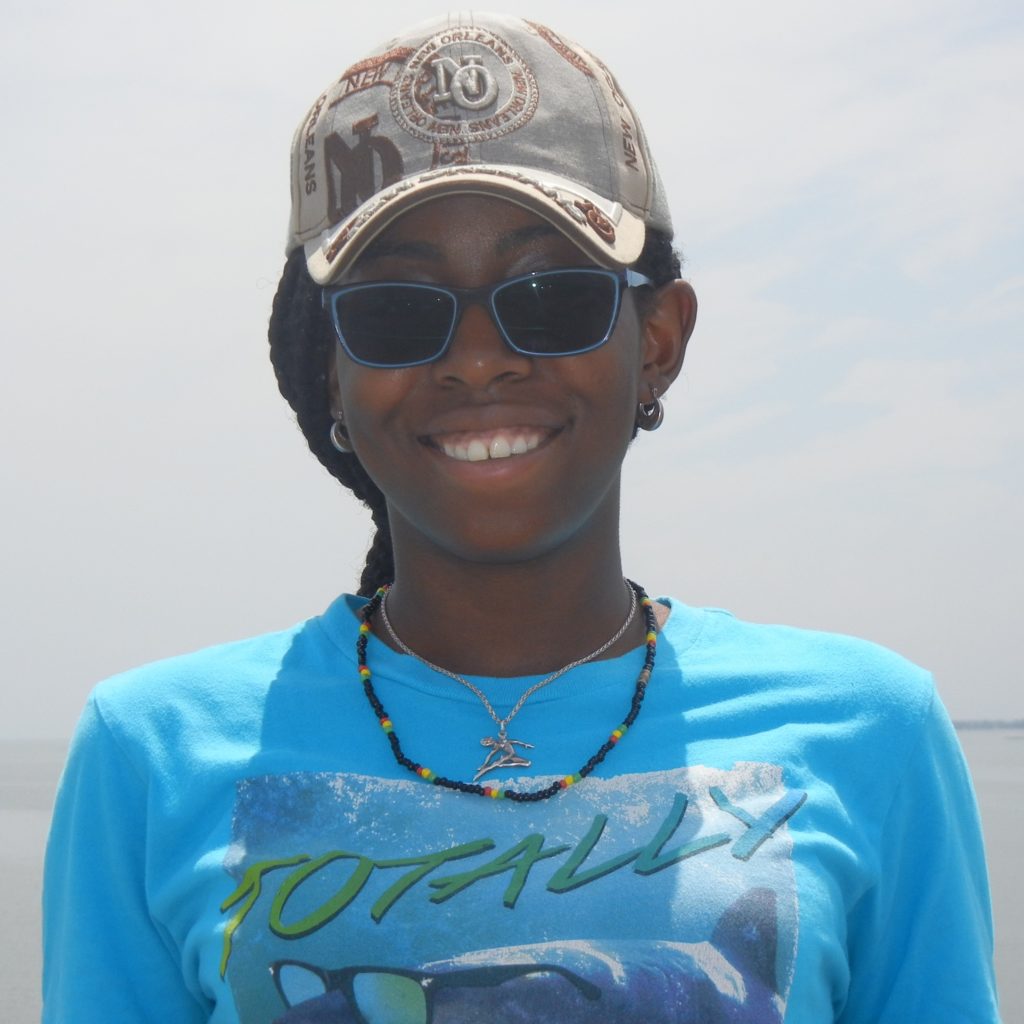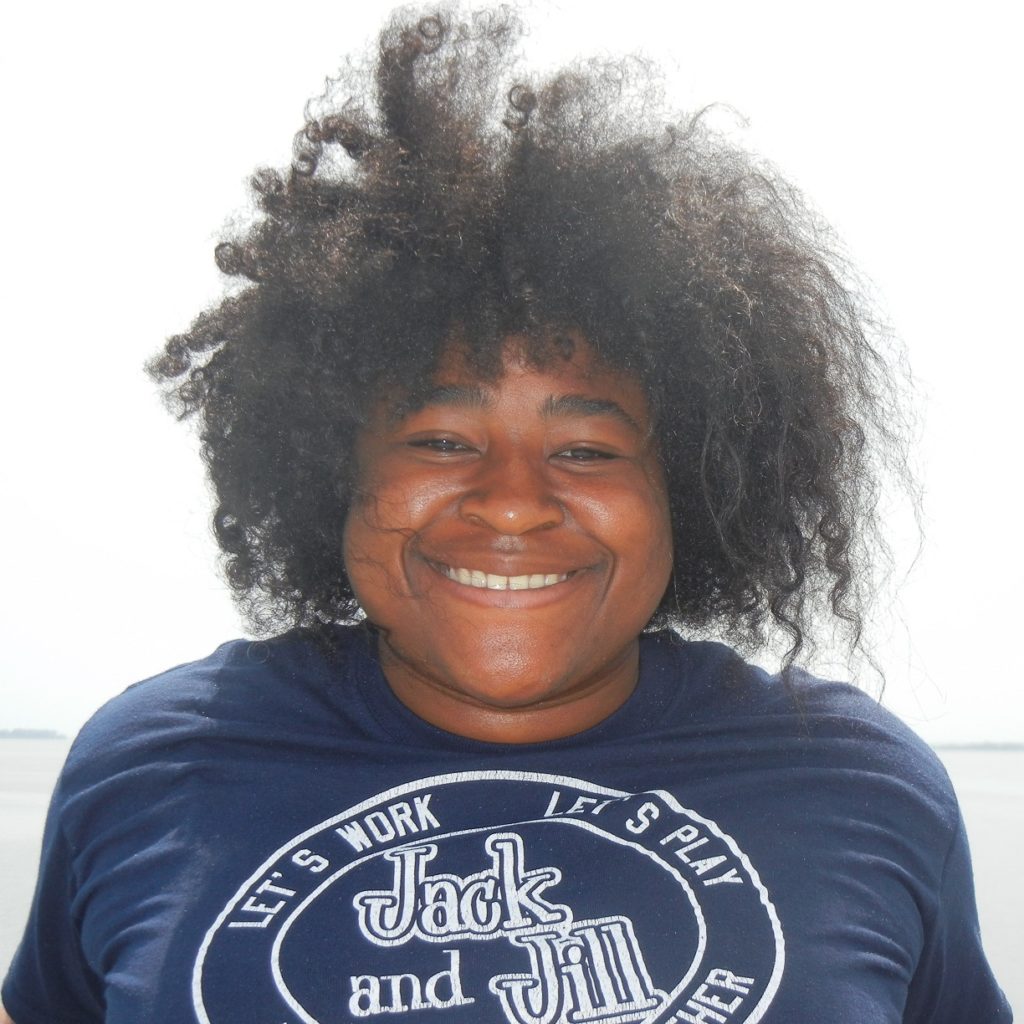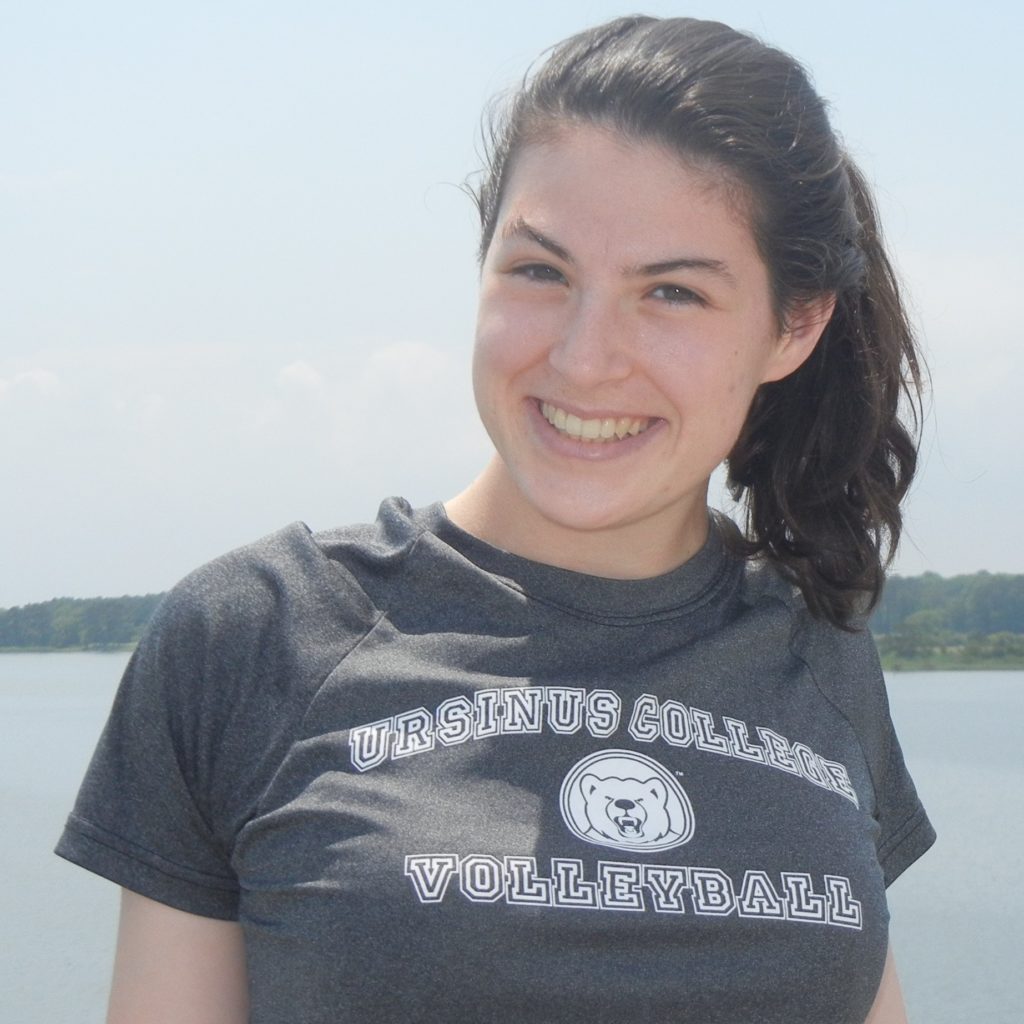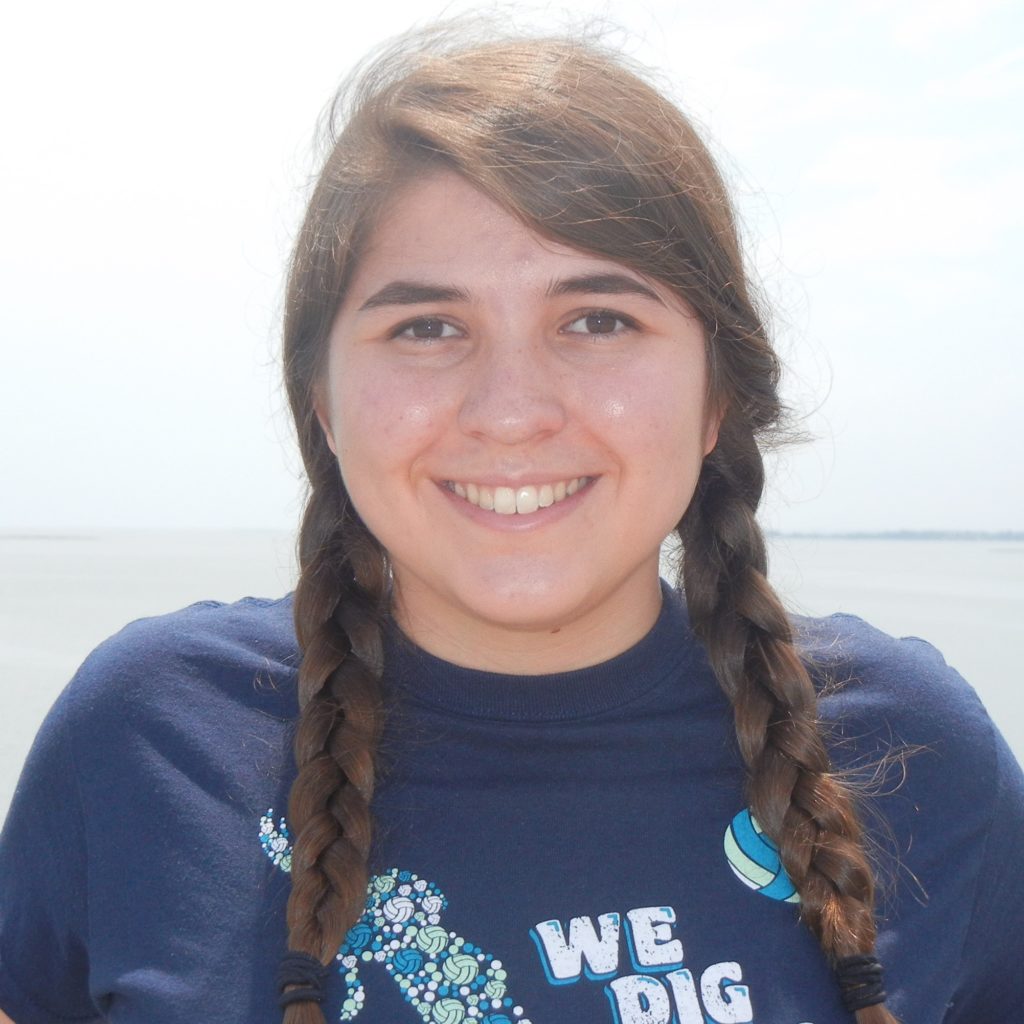2018 Student Participants

Alexcia Best, University of the West Indies
Faculty Mentor: Dr. Joe Pitula
Graduate Student Mentor: Veronica Periera
Genes of blue crabs involved in fighting parasites
Hematodinium is a parasitic dinoflagellate that is currently fou nd in 40 species of crustaceans. In Blue Crabs (Callinectes sapidus) the species of parasite that negatively affects the animal is Hematodinium perezi. This parasite is responsible for killing animals before they are harvested, and also causing bitter meat in the living animals that are infected. As in any animal certain genes are involved in the immune response. Glutathione S transferase is one of those genes and in this study it will be investigated whether or not the gene is upregulated during Hematodinium infection.

Colby Bommer, Hampton University
Faculty Mentors: Dr. Eric May and Dr. Maggie Sexton
Under Graduate Co-author: Raelynn Twohy, Missouri University of Science and Technology
An evaluation of the microbial community composition in a dead-end canal
The coastal bays are an interconnected water way formed by the barrier islands in the Delmarva Peninsula. In these bays there are shallow portions of water that are used for recreational purposes, known as dead-end canals. These canals have lack of movement and flushing causing a build up excess nutrients. The goal of this study is to find out the how this affects the microbial community in the canal. After sampling the canal, the bacteria were identified through cultured samples ran through BIOLOG protocol. The results showed there to be a higher concentration of Vibrio parahaemolyticus, Vibrio fluvialis, and Vibrio harveyi in all three sections of the canal. Analysis of the data showed that there was a difference between the two days with different bacteria showing up on each day.

Khari Crommarty, Hampton University
Faculty Mentor: Dr. Meng Xia
Graduate Student Mentors: Katherine Fitzenreiter and Miaohua Mao
Wind impact on water circulation
Most of the research in estuarine dynamics has focused on the effects of tides. Relatively little attention has been paid to the role of winds in estuarine circulation, despite early predictions of effects and observational evidence of strong wind driven flows. This project will cover a subject that doesn’t have much research on it, but is an important factor in any estuarine and coastal environment. Drifters were equipped with GPS transmitters and deployed within the Maryland Coastal Bays, and tracked remotely over time. Satellite retrieval of GPS coordinates allowed for calculation of mean current velocities between consecutive GPS fixes, and for visualization of drifter pathways using ArcGIS software. Additionally, local wind conditions were examined in conjunction with drifter data to investigate the effect of wind forcing on drifter advection and velocity, since wind is a known dominant forcing agent affecting estuarine dynamics, and wind conditions tend to vary seasonally. Though drifters traveled in the direction of surface currents, they appeared to follow the direction of prevailing winds. The results suggest that the coastal dynamics are greatly influenced by wind. Given that wind speed and direction are variable, it’s important to consider seasonally variable surface current flows when predicting transport pathways.

Nilanjana Das, Stockton University
Faculty Mentors: Dr. Ejiroghene Mayor and Dr. Paulinus Chigbu
Population ecology of blue crabs in the Maryland Coastal Bays
Blue crab (Callinectes sapidus) is abundant in the Mid-Atlantic waters and comprises the largest fishery in the State of Maryland. Little information exists on the population dynamics of blue crabs in the Maryland Coastal Bays (MCBs). This study was conducted using annual trawl survey data provided by MD DNR to describe C. sapidus distribution and recruitment in the MCBs. The influence of environmental factors (temperature, salinity, wind speed, El Nino Southern Oscillation (ENSO), and North Atlantic Oscillation (NAO) indices) on the recruitment of juvenile blue crab was assessed. Juvenile ( <60 mm CW) were most abundant in June (P<0.0001) in contrast to adult crabs (>60 mm CW), which were most abundant from June to August (P=0.0001). Spatially, juvenile crabs were most abundant (P < 0.0001) in site 5, in the St. Martin’s River (SMR). Similarly adult crabs occurred abundantly in sites 5 and 12, corresponding to the low salinity areas of the Bay (P=0 .0002). Generalized Linear Model results indicated adult female C. sapidus abundance, winter ENSO indices, and average summer temperature to be the most important factors affecting recruitment of juvenile blue crabs in the MCBs. Results of this research will aid with management of the species in MCBs.

DaQuan Davis, University of Maryland Eastern Shore
Faculty Mentors: Dr. Ligia DaSilva and Dr. Paulinus Chigbu
Undergraduate Co-author: Mohammed Saleh, University of Maryland Eastern Shore
The affect of physical parameters on heterotrophic bacteria in water samples collected from the Maryland Coastal Bays
Currently, the coastal bays of Maryland are at a critical point. Pollution by menacing bacteria is an ongoing issue that requires attention. Eventually, marine life residing in the bays are at great risk because of the elevating pollution caused by human activities. Furthermore, as bacteria contaminates the wildlife and humans are consuming those animals it could cause harmful health issues. This research is to determine the number of heterotrophic bacteria in water samples gathered from 5 different sites located in the Maryland Coastal Bays. Investigating the physical parameters and nutrient abundance help to entirely understand the growth rate of the bacteria. The evaluation of the bacteria was done through Direct Epifluorescent Microscopy. Additionally, the physical factors and nutrients of the water were measured. The research results convey solutions to overcome this dilemma in Maryland’s marine environment.

Julia Halm, Oberlin College
Faculty Mentor: Dr. Ali Ishaque
Graduate Student Mentor: Chelsea Richardson
Trophic assignment using lipid profiles, stable isotopes, gut content analysis, and mercury concentrations in Maryland’s Coastal Bays
An understanding of food web dynamics is crucial in order to predict the effects of environmental changes on an ecosystem. The focus of this study was to identify the dietary habits of Paralichthys dentatus, Anchoa mitchilli, Leiostomus xanthurus, and Bairdiella chrysoura in the Maryland Coastal Bays (MCBs). Samples were collected from 13 sites in the MCBs. Fish samples were dissected and the gut contents were identified and counted. Fish tissues were analyzed for stable isotopes of nitrogen, fatty acid biomarkers, and mercury. Gut content analysis suggested that spot and bay anchovy eat primarily polychaetes and mysids respectively. Fatty acid analysis indicated the presence of dinoflagellates in the diets of fish in the southern MCBs. Stable isotope analysis and mercury concentrations suggested that bay anchovy were at the highest trophic level, followed by summer flounder, silver perch, and spot.

Delaney Harrison Peters, Allegheny College
Faculty Mentor: Dr. Maurice Crawford
Occurrence of microplastics in Maryland Coastal Bay fish
While many studies have already been conducted on the prevalence of microplastics in fish gut contents, no studies have been conducted on fishes in the Maryland Coastal Bays. This study, we examined 103 gastrointestinal tracts of four fish species, Atlantic silversides and Bay anchovies (pelagic feeders) and Mummichogs and Spot (benthic feeders) from both the northern and southern sections of the Maryland Coastal Bays for the presence of ingested microplastics (> 0.5 mm). Reference plates were used to control for contamination by microplastics in the lab under ambient conditions. Out of the 103 fish examined only 2 fish (1.9%) contained microplastics > 0.5 mm in length that were different from the microplastics found in our reference plates. We found one Bay anchovy and a one Atlantic silverside containing microplastics. However, because there were so few fish containing microplastics in this study we were unable to form any conclusions regarding differences in feeding habitats (pelagic vs benthic) and or location.

Basie McKenzie, Tuskegee University
Faculty Mentor: Dr. Brad Stevens
Graduate Student Mentors: Stephanie Martinez-Rivera and Noelle Olsen
Estimating the fecundity of Jonah Crabs (Cancer borealis)in relation to carapace width and egg stage
The Jonah Crab, (Cancer borealis) is most commonly found on the East Coast from Newfoundland to Florida. Landings have increased six-fold in the last decade. In order to prevent over-fishing, managers need biological information. There is little information on the fecundity of crabs, so I chose to study their reproductive biology. The fecundity of each specimen was estimated based on the size of the clutch and crab. Using Image J software and pre-recorded measurements, I determined that the number of eggs (Fig. 1) in each clutch increased with the size of the crab and that this relationship did not vary with egg stage (early vs late). These findings make it possible to regulate over-fishing by setting limitations and rules concerning the size of crabs.

Hannah Merges, Ursinus College
Faculty Mentor: Dr. Salina Parveen
Graduate Student Mentors: Esam Almuhaideb and Jasmine Smalls
Prevalence of Vibrio vulnificus in blue crabs and seawater of the Maryland Coastal Bays
Blue crabs (Callinectes sapidus) comprise the largest fishery in the Maryland Coastal Bays (MCBs). Therefore, it’s important to be aware of the potential health risk of consuming or handling raw or under-cooked blue crabs that are contaminated with Vibrio vulnificus. V. vulnificus is a bacterium that thrives in warm waters with low salinity levels. The objective of this study was to fill in the current data gap with new information on the prevalence of Vv in blue crabs and seawater. Samples were collected from six sites across the MCBs in June, 2018. The Most Probable Number (MPN) method and real-time PCR were used to analyze samples for the prevalence of Vv (vvhA and vcgC). All samples were positive for vvhA and 81% of samples were positive for vcgC. There was no statistical difference between the results from each sample type, although the trend of the results showed an increasing prevalence of Vv in seawater to hemolymph to crabmeat. The regression analysis showed that there was a significant correlation between pH, dissolved oxygen, and salinity and the prevalence of Vv. Results showed these samples to contain Vv, which can pose a threat to public health, requiring future studies to be conducted.

Raelynn Twohy, Missouri University of Science and Technology
Faculty Mentors: Dr. Maggie Sexton and Dr. Eric May
Characterization of the physical characteristics of Maryland Coastal Bays Dead-End Canals
Little research has been done on the physical characteristics of dead-end canals. This study aimed to characterize the advective flow, water quality, effect of tides, and sediment make up. HOBO loggers were deployed to collect tidal data, YSI readings were taken to collect data on water quality, bottle experiments were used to isolate sources of oxygen, a new apparatus was created to measure surface flow, and sieving was used to determine soil make up. Tidal data shows to 2.11 hour delay from the Ocean City Inlet tidal measurements and the canal tides also had a smaller range (p=0). Wind direction was found to correlate with the deviations of the canal tidal height and the predicted tidal height (p=0.00313). Surface flow switched directions rapidly during all points in the tidal cycle. A salinity stratification was also observed at site 1 and 2 but not at site 3, and sediment makeup was found to be 82-100% <500µm. It can be concluded that water movement is very slow with wind direction affecting tidal levels.

Tyler Washington, Georgia Military College and University of Maryland Eastern Shore
Faculty Mentor: Dr. Kausik Das
Graduate Student Mentor: Eguono Omagamre
Biodegradable membrane for water filtration made out of wood saplings
Good permeability is a very desirable property of membranes to be utilized for practical applications such as water purification. In this study thin membranes from wood membranes were fabricated from the longitudinal and transverse sections of balsa wood block. Flow rates along both membrane types appears to be controlled by the piths and xylem cell numbers and their diameters. Acetylation of the membranes using an optimal reactant-catalyst ratio resulted in flow rate reduction in the transverse section membranes by up to 60% . The functionalization experiment presents an opportunity for fine tuning membrane transport properties for possible selectivity applications.


